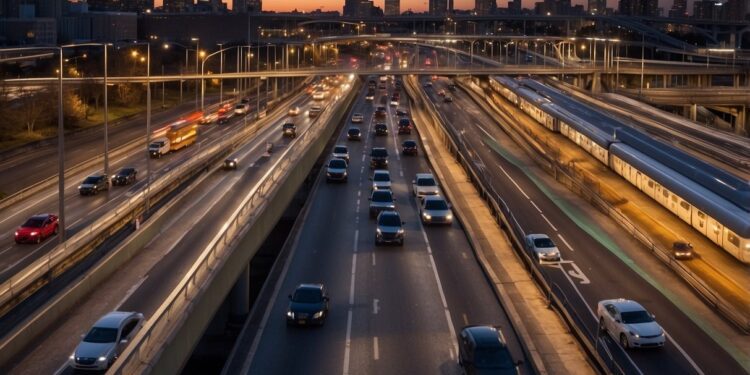The Department of Transportation (DOT) is pivotal in facilitating the secure and effective transport of individuals and goods nationwide. The DOT is responsible for overseeing the country’s transportation frameworks, which encompass highways, railroads, airports, and public transit systems. This extensive duty involves creating regulations, allocating funds for infrastructure enhancements, and ensuring adherence to safety protocols.
Beyond infrastructure, the DOT engages in research and innovation to drive progress in transportation technologies and methodologies. Through various agencies, it evaluates and advances the safety, reliability, and sustainability of transport methods.
By managing everything from traffic safety to public transit, the DOT has a profound influence on everyday life and the economy. The policies and initiatives developed by this department aim to improve mobility and decrease fatalities and injuries related to transportation.
Functions and Responsibilities
The Department of Transportation (DOT) carries out a variety of roles, which include policy formulation, infrastructure upkeep, transportation safety, innovation, and research. These undertakings contribute to ensuring the effectiveness, safety, and modernization of the nation’s transportation systems.
Policy Formulation
The DOT creates national transportation policies designed to promote safe and efficient travel. It develops regulations and standards that oversee air travel, highways, railroads, and maritime transit. These standards guarantee industry compliance with safety and environmental guidelines. Additionally, the DOT addresses new developments in transportation, collaborating with state and local governments, private sector organizations, and international entities.
Infrastructure Upkeep
One of the primary responsibilities of the DOT is to maintain and enhance transportation infrastructure. This includes overseeing the construction and repair of highways, bridges, and public transit systems, along with managing funding and project supervision. Advanced fleet management software aids in tracking and optimizing the upkeep of government vehicles. Routine inspections and assessments are conducted to maintain infrastructure integrity and safety.
Transportation Safety
Prioritizing safety across all forms of transportation is crucial. Two significant agencies under the DOT, the National Highway Traffic Safety Administration (NHTSA) and the Federal Aviation Administration (FAA), implement safety initiatives, conduct accident analyses, and formulate regulations aimed at reducing incidents. Public awareness campaigns are designed to promote safe driving habits and highlight new safety technologies.
Innovation and Research
The DOT invests in innovative transportation solutions and research aimed at improving system efficiency and sustainability. It examines developments in fleet management software, autonomous vehicles, and smart city technologies. Through grants and partnerships, the DOT supports research initiatives that aim to diminish carbon emissions and enhance fuel efficiency. Disseminating research findings influences future transportation policies and practices.
Impact on the Transportation Sector
The Department of Transportation (DOT) significantly shapes the transportation sector through various mechanisms. These include establishing regulations and fostering technological advancements that ensure safe, efficient, and modern transport systems.
Support and Regulation
The DOT sets safety regulations and standards across all transportation modes, including road, rail, aviation, and maritime. This oversight guarantees that vehicles and infrastructure adhere to stringent safety criteria, minimizing accidents and enhancing public confidence.
Through grant programs, the DOT allocates funding to state and local authorities for infrastructure initiatives. This financial backing is crucial for maintaining and upgrading transportation networks, ensuring they meet the demands of modern society.
Additionally, the DOT enforces environmental regulations to lessen pollution and advocate sustainable practices within the sector. Measures like fuel efficiency standards for vehicles and emissions regulations help curb the transportation industry’s environmental footprint.
Technological Innovations
The DOT promotes the adoption of cutting-edge technologies in transportation. Key initiatives include the expansion of electric vehicle infrastructure and support for the development of autonomous vehicles.
Fleet management software is increasingly important as the DOT prioritizes safety and efficiency. This technology streamlines processes, monitors vehicle performance, and ensures compliance with regulatory standards.
The investment in Intelligent Transportation Systems (ITS) illustrates the DOT’s role in facilitating technological advancements. ITS utilizes sensors, communication technologies, and data analytics to enhance traffic management and alleviate congestion, thereby improving overall mobility.
These initiatives highlight the DOT’s commitment to propelling the transportation sector forward through regulatory frameworks and technological advancements.


